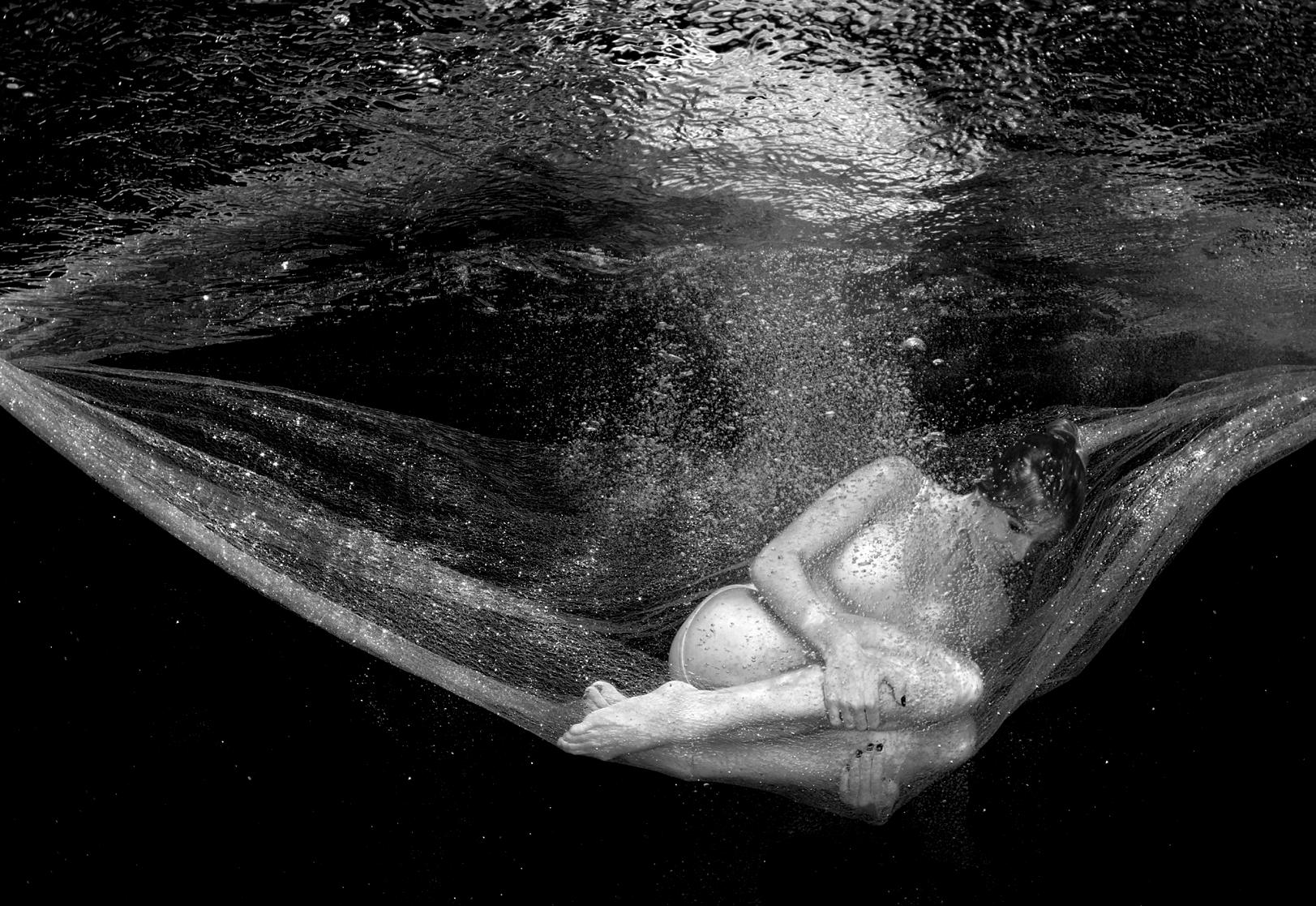
4 minute read
Alice Through The Looking Glass, Nur Tucker
NUR TUCKER LRPS
Nur was the winner of the September 2020 issue’s cover competition with Alice Through The Looking Glass (right). We invited Nur to tell us more about her photography how she created the winning shot.
Iam a fanatic diver and an underwater photographer. Normally I would take photos of large whales or some tiny invertebrates that you can only photograph with special lenses and dioptres. I love entering competitions. For me, this is the way to keep myself on my toes all the time and keep up with the advances in photography. I learn to be self-critical. In order to win, one must create something out of the ordinary. I strive to produce something unusual all the time. I never look at the previous year’s winners and try to imitate them. This is not a path to win. Before each dive, despite the fact that nature is unpredictable, I would still have a plan in my head about what I would be doing. I am interested in different techniques and also different genres in photography. For example, I try to use a technique that some people have used photographing bugs and I would apply this to underwater super macro photography. Sometimes for a particular shot, I prepare for months, mentally – this includes its choreography and its technical details such as special effects, lighting, new lenses.
Last year I had a health scare and I was not allowed to dive for a year, for a fanatical diver like me, it was a very harsh ask. So, I decided to take photos in a pool using models without the additional atmospheric pressure and the nitrogen bubbles in my blood stream that depth brings. I did a series of sessions that produced very interesting and surreal shots without employing any Photoshop. All I had to do was to cleverly use the reflections, and refractions of the sun beams, and other lighting equipment above all, my imagination.
Photography in pool sometimes even requires me to brush up my skills in Physics (from optics to Archimedes principles). ‘Alice through the Looking Glass’ took a long time to accomplish. For this shot, the outfit was essential. It took me several weeks to prepare the costume including the dress, apron, stripy-tights and shorts under the dress, school shoes and the ribbon. Then I had to prepare a background for which I used

a thick fabric to cover the mosaic of the pool, and on top of it I used some floaty fabric for the drape effect and reflections. I carefully placed a silver gilded empty frame upside down in water floating. Then Alice entered the water. Both of us had to withstand the cold water as the pool was not heated and after some time the body temperature falls very quickly. Both my model and I were shivering as we had to stay there for a long time.
The rest was correct positioning of everything and lighting. For this shot I timed it around 2 pm, I wanted the sun to be still quite up but at a slight angle for reflections. Details were very important here: All of the body, limbs, hair, dress and the silver frame had to be in the shot (without being cut) and look proportional (I used a 10-17mm fish-eye lens). Underwater, nothing stays put - Alice’s long hair falls off looking like a stick; hem of her dress ends up on her head and the frame wanders off. I do not have an assistant, so I have to keep fluffing up the hair, bring the frame back to its original position, and give directions to my model while trying to defog my mask and go back to my original position before everything moves back again. Doing all this while getting the lighting and exposure right was a challenge. Surface wind created another challenge: the background materials were flying and puffing up, frame was sailing in the pool constantly and the surface of the water was losing its reflective qualities. I had to create an impression that Alice was going through the mirror and finding the right moment for reflections of the water was paramount.



For this shot I used a Nikon D500, Tokina 1017mm fisheye lens, Subal underwater housing, Inon Z240 Strobes, off camera SUPE Video lights and Sea and Sea slave lights to fill the shadows. F11, 1/250th, ISO100. The shot was taken in Bodrum, Turkey in an outdoor pool. My model was a local 13-year-old schoolgirl called Aleyna Var. She was ecstatic to hear that she become a cover-girl for the Creative Eye Magazine. nurtucker.com













